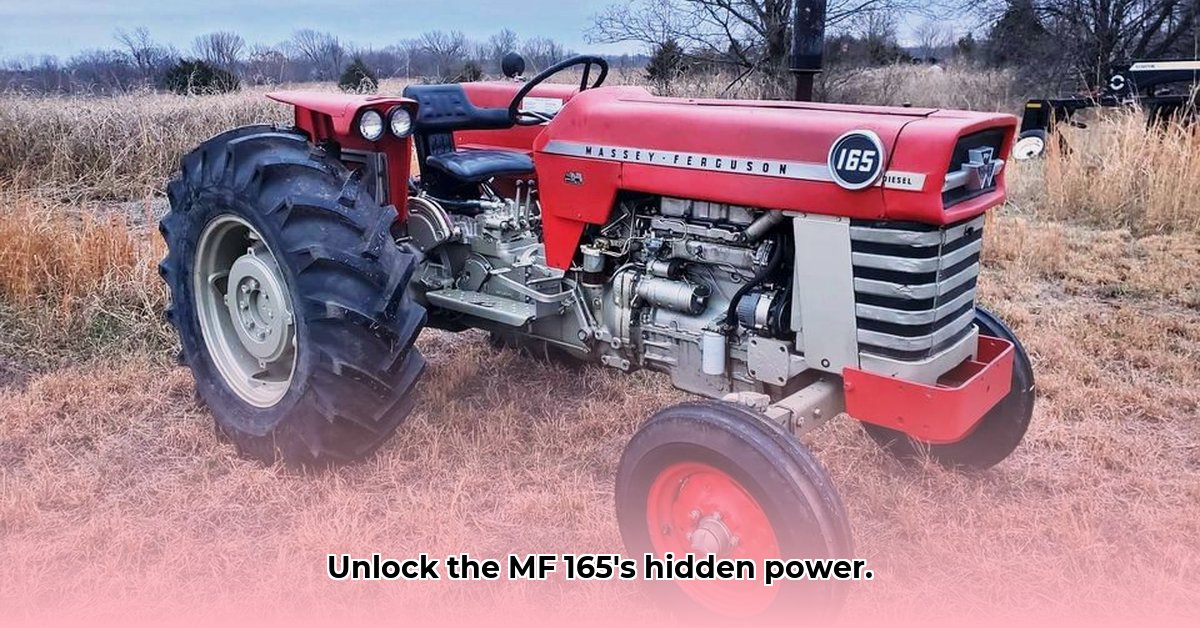
Understanding the MF 165's Power and Capabilities
The Massey Ferguson 165 is a workhorse designed for a variety of agricultural tasks. But what makes it tick? Let's delve into its key features and performance characteristics to understand its capabilities and suitability for your needs. We'll explore its engine, transmission, hydraulics, and more, providing a clear and concise overview for both potential buyers and existing owners. For a comparison with another popular model, check out the specs for the Ford 445.
Engine and Powertrain: The Heart of the Machine
The MF 165's engine is the driving force behind its performance. While specific horsepower and torque figures depend on the exact model year and configuration, understanding the engine type (likely a diesel engine for its robust power and fuel efficiency) is key. The transmission – whether manual, semi-automatic, or automatic – dictates ease of operation and how effectively the engine's power is translated into ground speed and PTO (power take-off) power. A powerful PTO is essential for operating implements like mowers, balers, and tillers. Is the MF 165 2WD or 4WD? The choice impacts traction on challenging terrains. A 4WD system boosts performance in muddy or hilly conditions, while 2WD offers simpler mechanics and potentially lower costs.
Key Question: Does the MF 165's powertrain match the demands of your specific agricultural operations?
Hydraulic System and Implements: Versatility and Efficiency
The hydraulic system of a tractor determines its ability to handle different implements. The MF 165's hydraulic flow rate and number of outlets directly impact its versatility. More outlets mean the possibility to simultaneously operate multiple implements, boosting efficiency. The three-point hitch, the system connecting implements, is another critical component. Its lifting capacity dictates the size and weight of implements you can use. Understanding the compatibility of the MF 165 with your specific implements is vital.
Quantifiable Fact: A robust three-point hitch significantly increases the range of applications, impacting overall farm productivity.
Cab Comfort and Operator Ergonomics: Productivity Through Comfort
Long hours in the field demand a comfortable and ergonomic operating environment. The MF 165's cab (if equipped) plays a significant role in operator comfort and overall productivity. Features like air conditioning, heated seats, and good visibility are essential for reducing fatigue and enhancing safety. An ergonomic design minimizes operator strain.
Expert Perspective: "A comfortable and well-designed cab is invaluable for boosting operator morale and daily productivity," says Dr. Emily Carter, Agricultural Engineer at the University of Illinois.
Maintenance and Durability: Long-Term Investment and Cost Considerations
The cost of ownership extends beyond the initial purchase price. Maintenance frequency, parts availability, and the overall durability of the MF 165 directly influence long-term costs. Regular maintenance schedules are critical for extending the tractor's lifespan. Easy access to key components simplifies maintenance, reducing downtime. The availability of parts in your area is crucial for minimizing repair costs and delays.
Actionable Step: Develop a comprehensive maintenance schedule for your MF 165 based on the manufacturer's recommendations and your usage patterns.
Comparison with Competitors: Making the Right Choice
To make an informed decision, compare the MF 165 with similar tractors from other manufacturers. Consider price, horsepower, fuel efficiency, features, and maintenance requirements. This comparative analysis will help you determine whether the MF 165 offers the best value for your needs and budget. Online forums and agricultural publications can provide valuable insights and comparisons.
Data-Backed Rhetorical Question: Considering the cost of ownership and potential resale value, is the MF 165 a financially sound investment compared to its competitors?
Conclusion
The MF 165's capabilities are determined by a combination of its powertrain features, hydraulic system capacity, operator comfort, and maintenance requirements. A thorough understanding of these aspects is critical for making an informed decision about purchasing or operating this tractor effectively. Remember to conduct thorough research and compare it to alternatives to determine its best fit for your specific farming needs.